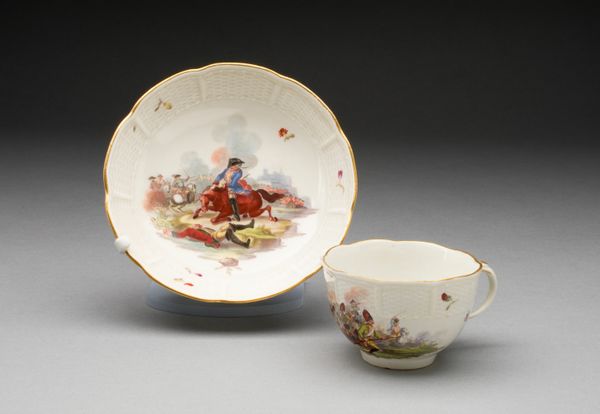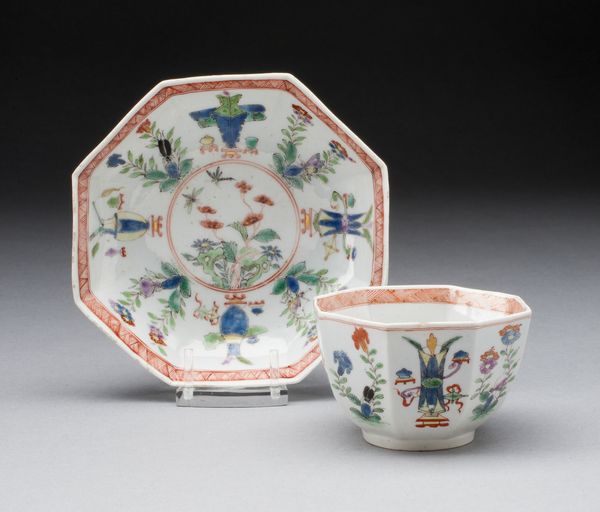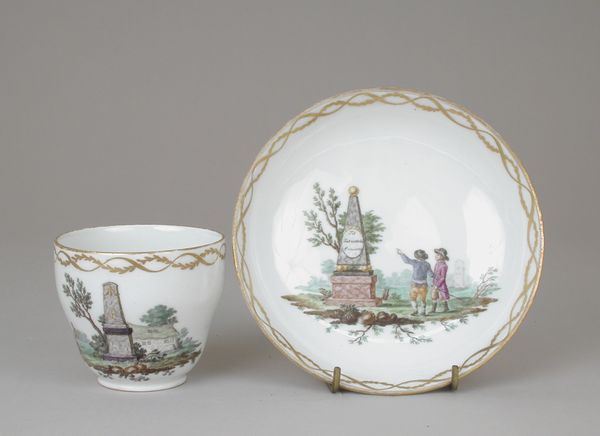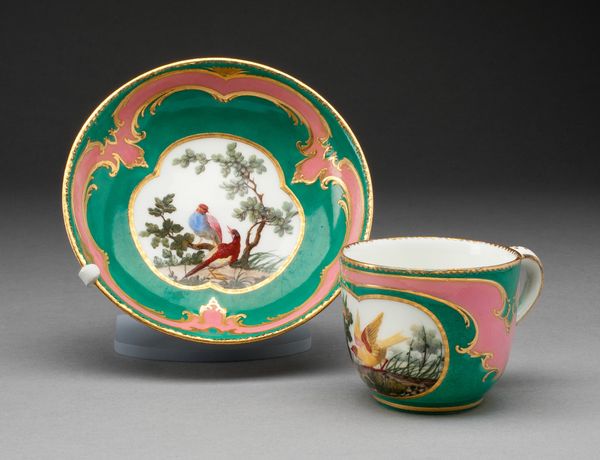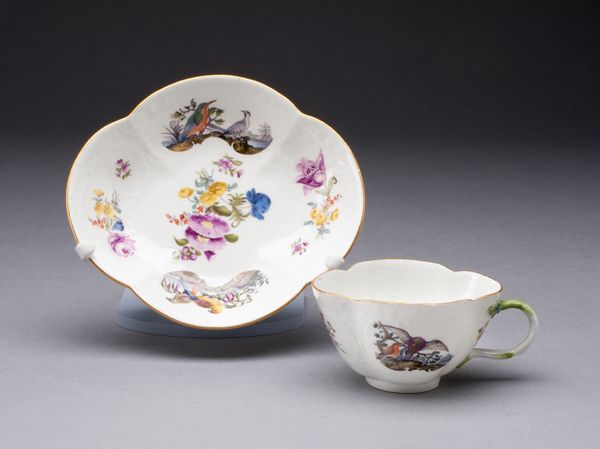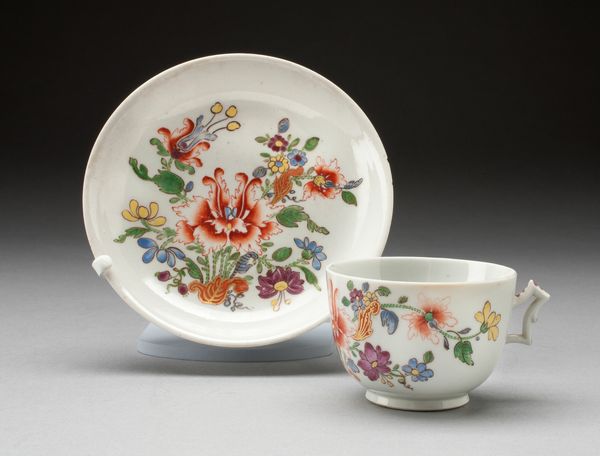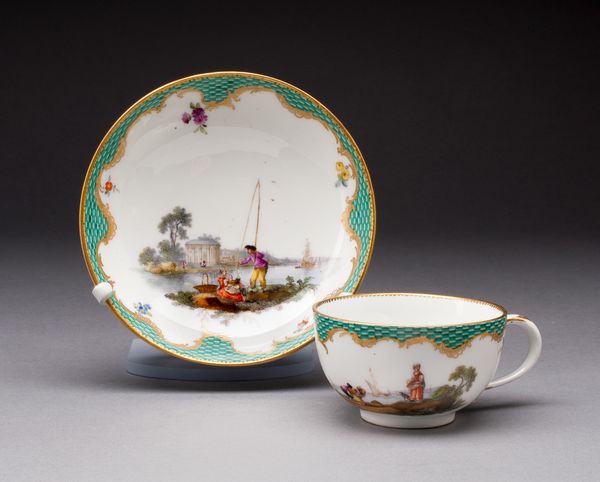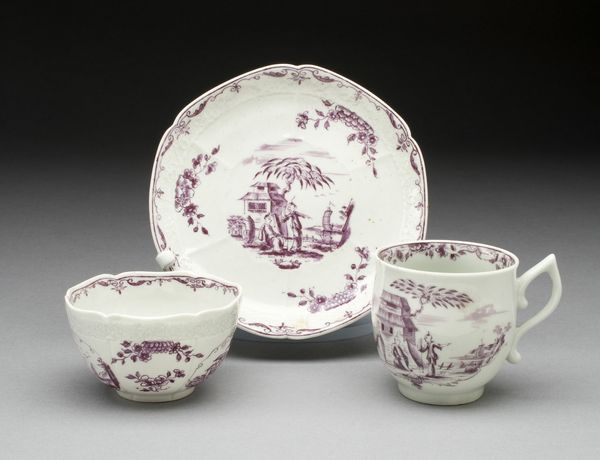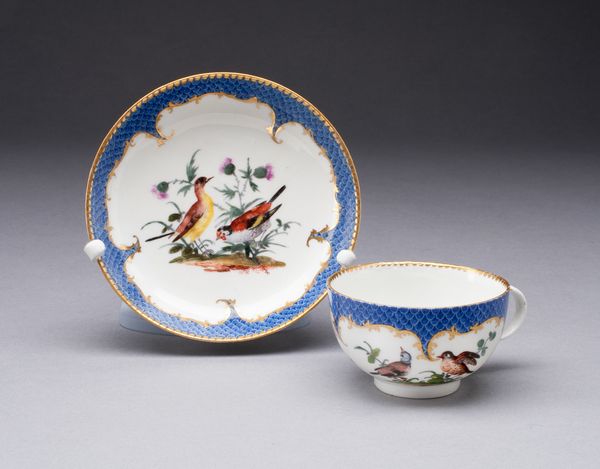
painting, ceramic, porcelain
#
painting
#
ceramic
#
porcelain
#
ceramic
#
genre-painting
#
decorative-art
#
miniature
#
rococo
Dimensions: Cup: H. 3.8 cm (1 1/2 in.); diam. 6.4 cm (2 1/2 in.); Saucer: H. 2.9 cm (1 1/8 in.); diam. 12.4 cm (4 7/8 in.)
Copyright: Public Domain
Curator: So, here we have a Tea Bowl and Saucer made around 1770 by the Weesp Porcelain Factory. What are your first thoughts? Editor: It's so delicate! I’m drawn to the miniature genre paintings decorating each piece. The rococo style feels very lighthearted, almost whimsical. What do you see in this piece? Curator: Well, beyond the evident beauty, I see a reflection of power and privilege. Porcelain in the 18th century wasn’t just about enjoying tea; it was a display of wealth. Notice how these scenes on the bowl and saucer depict leisurely figures. What does it tell us about the social context in which such objects were used? Editor: It does feel like it's showing an idealized version of life for the wealthy, detached from the realities of most people at the time. Were there particular social expectations tied to these tea ceremonies? Curator: Absolutely! Tea drinking was highly ritualized, particularly amongst women. It became a stage for demonstrating refinement and social standing. And, of course, let's not forget that the tea itself was a product of colonialism and exploitation. It compels us to think about the human cost behind such exquisite objects. Do you think viewing it with this context changes how we appreciate the artwork today? Editor: Definitely. It makes me consider the complicated history and social inequalities embedded in even the most seemingly harmless objects. Curator: Exactly. It transforms this delicate tea set into a powerful prompt for reflecting on the social, political, and economic currents that shaped its creation and continue to resonate today. Editor: I’ll never look at a teacup the same way again! Curator: And hopefully, that expanded perspective extends to viewing the world around us.
Comments
No comments
Be the first to comment and join the conversation on the ultimate creative platform.
